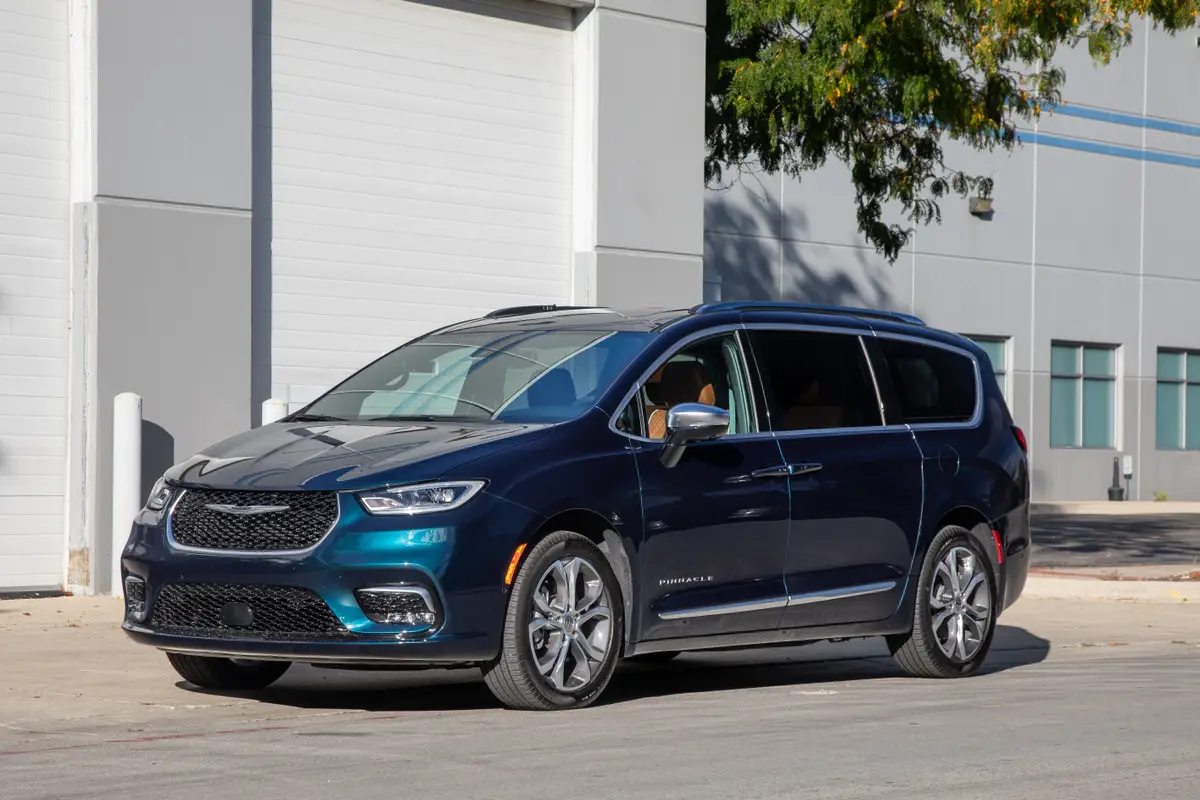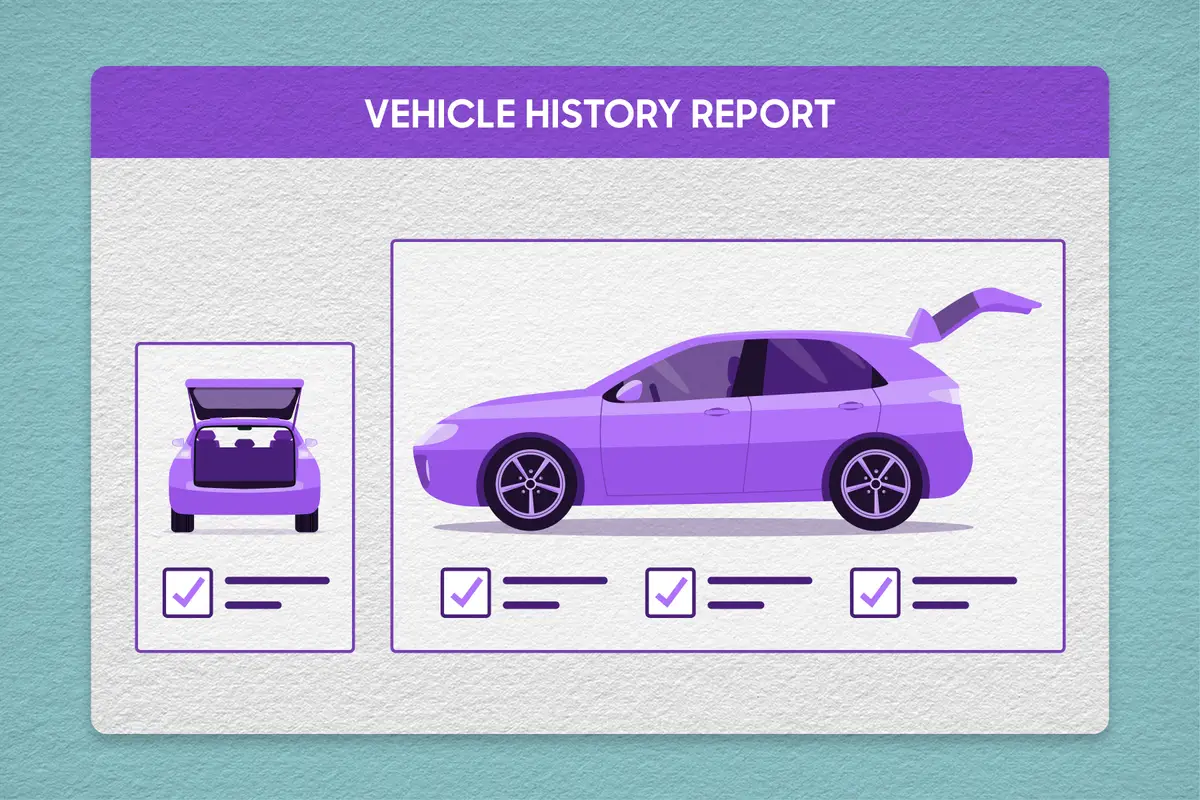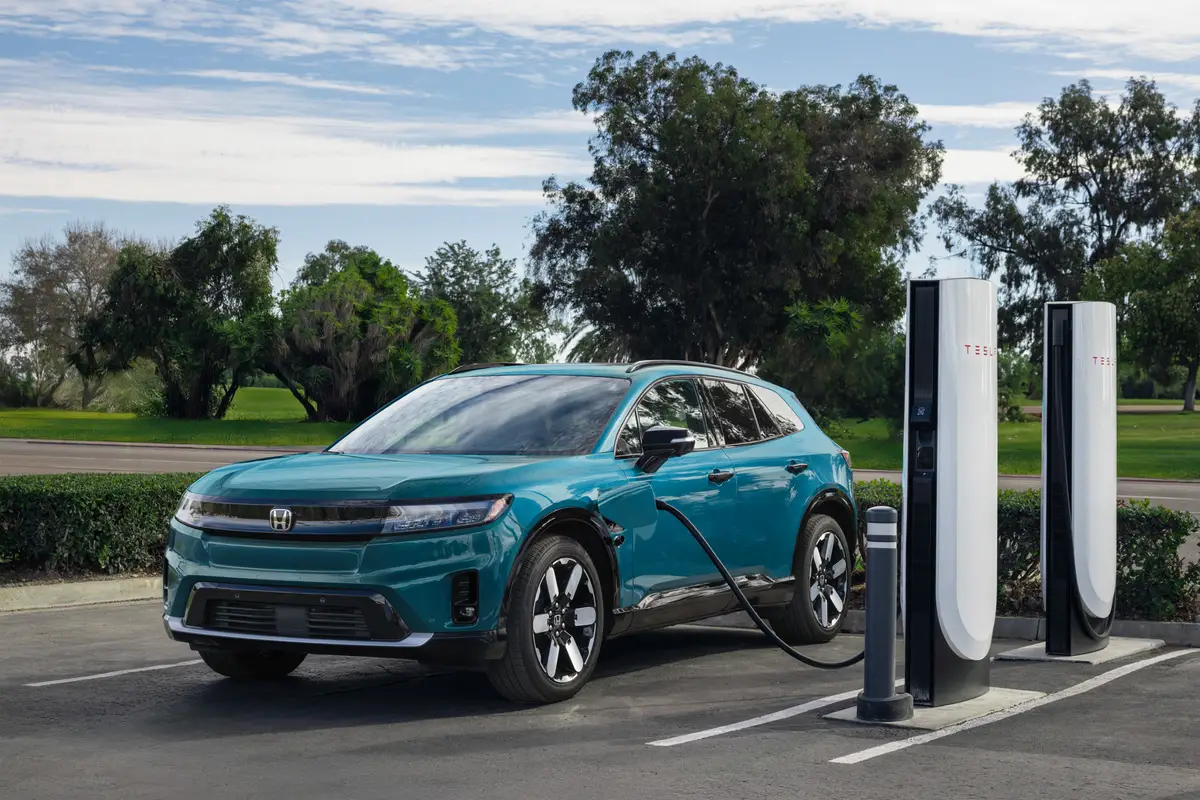How Does a Car Defroster Work?

Key Points:
- Most cars are equipped with defrosters for the windshield and rear window to improve visibility by clearing fog, ice and snow.
- Most defrosters rely on the heat from a car’s engine, but some vehicles have electrically heated windshields, while electric vehicles rely on electric sources for their heating and cooling systems.
- If the defroster system is turned on and there’s fog on the inside of the windshield or rear window, there may be an issue that needs to be addressed by a mechanic.
Most cars have a defroster for the windshield that also aims to clear the front side windows, plus a separate defroster for the rear window, and they usually work differently. (What also works differently is the windshield defroster in electric vehicles.) So, how does each work?
Related: Why Does My Car Heater Blow Cold Air?
Windshield Defrosters
Key Takeaways:
- A car’s defroster uses warm, dry air from the climate-control system to clear fog, snow and ice from the windshield. Issues with the heater, air conditioner, fan or blend door can reduce its effectiveness.
- Fog on the inside of the windshield may be due to the air-conditioning system not drying the air, the climate control being set to recirculate or moisture from occupants’ breath, wet clothes or a leaking heater core.
In most cases, warm, dry air is used to clear the windshield and front side windows of fog, snow and ice. The warmth comes from the car’s heating system, which uses engine-heated coolant, while the dryness comes from the air-conditioning system, which dehumidifies air as it cools it. As such, if your heater isn’t putting out warm air (or the warm air isn’t being directed at the windshield), the windshield will not be cleared of snow and ice very quickly. This can be caused by any number of things, including:
- a stuck thermostat
- low coolant level
- problems with the heater control valve
- a bad fan
- a malfunctioning blend door
Warm air that’s not blowing at the windshield when in defrost mode (you should be able to feel it coming out where the top of the dash meets the windshield) indicates that the blend door — which is what directs air to the floor, vents or windshield — isn’t working properly. Any problems here need to be corrected, most likely by a mechanic.
If you’re getting fog on the inside of the windows even though the defroster seems to be working, it may be because the air conditioning isn’t functioning correctly — and thus not drying the air; any issues here should also be repaired.
It may also be due to the climate-control system being set to “Recirc,” short for “Recirculation.” Recirc is typically activated by a separate button, usually marked as such or including a circular arrow inside the outline of a car; a small light on the button often glows when it is turned on. This setting is often used in the summer to maximize cooling because it takes already-cool interior air and recirculates it through the system rather than starting with hotter outside air, which means the air coming out the vents is colder. (This is often what happens when “Max A/C” is chosen.) The same applies for heat in the winter: It sends the heater air from inside the car that’s already a little warm rather than starting with frigid outside air.
However, the problem in either scenario is humidity. What causes fog on the inside of the windows is moisture in the air hitting the cold windows and forming condensation. That moisture comes largely from your breath, but it can also come from wet clothes or water from thawed snow pooling on your floormats. Or, if the air inside the car smells kind of sweet, that could be a leaking heater core under the dash that’s dripping coolant onto the carpet. Whatever is causing the fog, sometimes it helps to crack open a window to let fresh air into the car.
While instinct would be to wipe off any window fog with your hand, that’s not really a good remedy. Even though it will clear it in the short term, the oil from your hands can make things worse down the road. A towel might be better, but it’s best to use a microfiber cloth (which can also be used to keep the inside of the windows clean and help reduce the chance of fog in the first place). Also, don’t pour hot water on a cold windshield to melt the ice or snow, as the sudden drastic temperature difference can cause the windshield to crack.
All the preceding applies in most cases. Some cars have electrically heated windshields; these make use of very fine wires or a thin film embedded into the glass that heats up to clear the windshield. While this sounds great — largely because it works more quickly than waiting for the engine to heat up in winter — heated windshields are quite expensive, both when new and if they need to be replaced. Additionally, in EVs, the heating and cooling (and thus their defrosting) come from electric sources rather than from engine coolant or a conventional engine-driven air-conditioning system.
Read More Service Articles on Cars.com:
- What’s a Cabin Air Filter and When Should You Replace It?
- What Does the ‘Auto’ Button for My Air Conditioning Actually Do?
- When Should I Precondition an EV?
- Why Does Your Air Conditioning Need Recharging?
- More Service News
Rear-Window Defrosters
Key Takeaways:
- Rear-window defrosters heat up the glass via embedded wires, and they typically turn off automatically after about 10 minutes.
- If the rear defroster isn’t working, check for a blown fuse or a malfunctioning button. However, if the light on the button is illuminated but the system is not working, the heated wires in the rear window may need to be repaired.
In the vast majority of cars, including EVs, the rear-window defroster is made up of fine wires embedded into the glass that heat up to defrost the window; in most cases, you can see the wires up close. The defroster is usually activated by a separate button than the one used for windshield defrosting, and it often automatically turns off after about 10 minutes. In cars with heated side mirrors, turning on the rear defroster may also turn on the side-mirror heaters, though some cars do that through a separate switch.
If you press the rear defroster button (usually a rectangle with wavy “heat” lines in it) and the defroster doesn’t seem to turn on, there are a couple of things you can check. First, a small light usually illuminates in the button when the defroster is activated. If there’s no light, the defroster’s fuse may be blown, which is fairly easy to check and replace, or the button itself may have malfunctioned, which is somewhat harder to replace. However, if the light turns on but there’s no defrosting, it’s possible the heated wires in the rear window may have broken. A broken wire can sometimes be repaired without replacing the glass, but not always.
Besides being annoying, ice, snow or fog on your windows can severely restrict visibility, so getting the problem resolved is a safety necessity.
Related Video:
Cars.com’s Editorial department is your source for automotive news and reviews. In line with Cars.com’s long-standing ethics policy, editors and reviewers don’t accept gifts or free trips from automakers. The Editorial department is independent of Cars.com’s advertising, sales and sponsored content departments.
Featured stories




